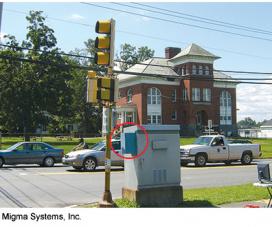Federal Research Program Levels the Playing Field for Small Business
It's no secret that small businesses are critical to the U.S. economy. The U.S. Small Business Administration (SBA) reports that small businesses represent more than 99 percent of all U.S. firms and create more than 60 percent of the net new jobs in the U.S. The entrepreneurial spirit of small businesses provides a thriving hotbed for innovation, but many lack the funding and resources to compete with large companies. To help small businesses compete on the same level as larger firms, the Small Business Innovation Research (SBIR) program reserves a percentage of federal research and development funds for small businesses.
Through a competitive awards-based program, the SBIR program encourages the commercialization of a technology, product, or service by funding the often costly startup and development stages. Coordinated by SBA, SBIR enables small businesses to explore technological innovation potential and provides incentive to profit from its commercialization.
Volpe, The National Transportation Systems Center, plays a critical role in the U.S. DOT's SBIR program by administering the program for the Department of Transportation. Each year, Volpe issues two SBIR solicitations. The research topics and awards per solicitation are varied and depend on available funding and research needs. When Volpe's acquisition professionals award SBIR contracts, they not only provide small businesses with the opportunity to work with the federal government, they also help stimulate high-tech innovations and the U.S. economy.
Migma Systems, Inc., a Massachusetts-based small business, responded to an SBIR solicitation to develop a new approach for detecting and tracking pedestrians at intersections to improve pedestrian safety. Funded by the Federal Highway Administration (FHWA), Volpe awarded Migma Systems a Phase 1 SBIR contract to create a proof-of-concept document that demonstrated the scientific feasibility of its technical approach.
Once the FHWA determined the scientific approach to be feasible, Volpe awarded the small business a Phase 2 SBIR contract to move from concept to full-scale prototype. During this phase, Migma developed and tested a new infra-red (IR), light-emitting diode (LED) stereo camera that can detect pedestrians in near real time, day and night. The stereo camera has two lenses with separate image sensors for each lens, allowing the camera to capture three-dimensional (3-D) images. Researchers also developed pedestrian detection algorithms, enabling them to extract generic 3-D features from a stereo disparity map, which measures the difference between the two views.
The prototype can discriminate pedestrians from vehicles, taking advantage of the concavity of the human body. When the device detects pedestrians approaching the crosswalk, it can send a signal to the traffic signal controller to call the pedestrian phase for the person needing to walk across the street. Where needed for slow-moving pedestrians, who take more time to cross a street, the device can detect pedestrians still in the crosswalk and send a request to equipped traffic signal controllers to extend the "walk" signal until the pedestrian has safely crossed the street.
More than 4,000 pedestrians died in traffic crashes in the United States in 2009, according to the National Highway Traffic Safety Administration. Migma's new technology—made possible by DOT's SBIR program—will soon move to the commercialization phase, transforming the way pedestrians are detected at intersections, which will greatly improve safety.
"SBIR success stories like Migma's are a win-win. A small company is able to grow and its innovative technology benefits the general public in terms of increased safety," said Leisa Moniz, DOT's SBIR program director.
SBIR has helped thousands of small businesses compete for federal research and development awards. According to SBA, small business contributions via the SBIR program have enhanced the nation's defense, protected our environment, advanced health care, and improved our ability to manage information and manipulate data. To learn more about SBIR, visit the U.S. Government's official SBIR website.
To learn more about the technology for detecting and tracking pedestrians, click here.

Migma Systems pedestrian detection device installed at a roadway intersection. (Volpe photo)
